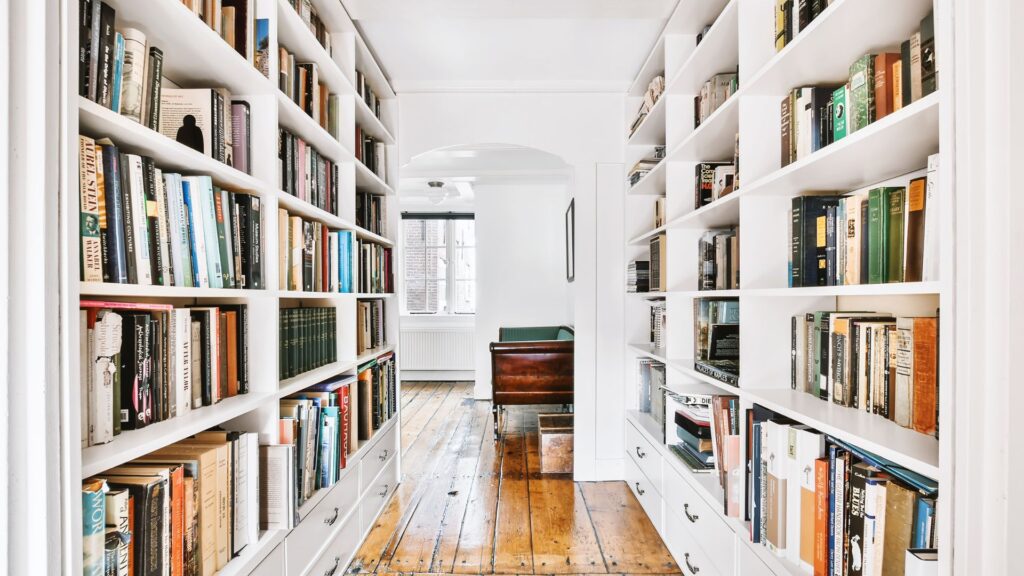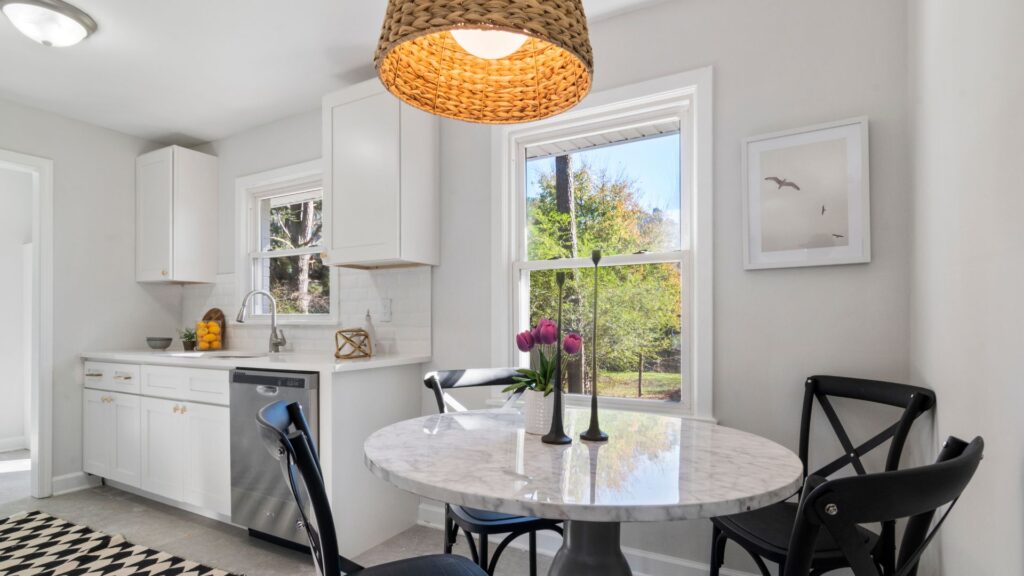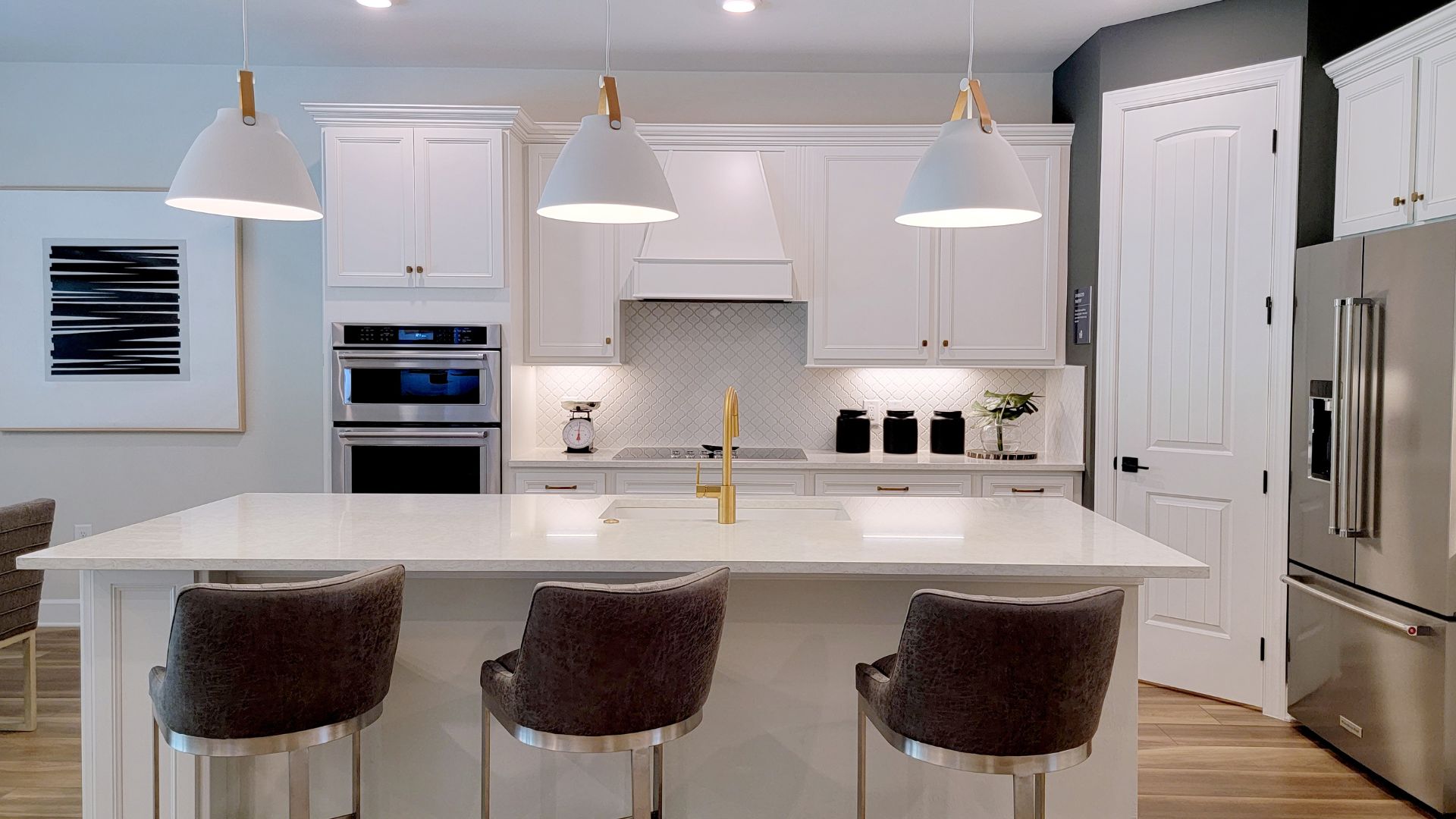Planning a small home starts with deliberate organization that transforms each square foot into a functional zone. This guide reveals core design principles, multifunctional furniture options, storage strategies, room-by-room layouts, and visual techniques to enhance perceived space. Readers will learn how to harness natural light, select the right furnishings, optimize every wall, tailor each room, and adopt decluttering habits—all while tapping into professional expertise, such as Rise Interiors’ full-service design offerings.
What Are the Core Principles of Space Planning for Small Homes?
Space planning for small homes involves defining functional zones through strategic placement of elements so living areas feel open and practical. Three guiding principles ensure cohesive design:
- Emphasize natural light to reduce visual boundaries.
- Scale furniture to room dimensions for balanced proportion.
- Arrange clear pathways to support smooth traffic flow.
Core Principles of Space Planning
Space planning in small homes involves defining functional zones through strategic placement of elements to make living areas feel open and practical. Three guiding principles are to emphasize natural light, scale furniture to room dimensions, and arrange clear pathways to support smooth traffic flow.
Embracing these principles sets a foundation that carries through every furnishing choice and layout decision.
How Does Natural Light Enhance Small Home Interiors?
Natural light brightens surfaces, reduces shadows, and expands perceived boundaries by highlighting textures and corners. Positioning windows and using sheer treatments allow daylight to penetrate deeper, which makes compact rooms feel more expansive and inviting. This luminosity also supports plant health and complements interior greenery.
Why Is Furniture Scale and Proportion Crucial in Small Spaces?
Selecting pieces that match a room’s floor area prevents overcrowding and maintains balanced sightlines. Low-profile sofas, narrow armchairs, and slim tables create breathing room, while proportionate rugs and lighting fixtures reinforce a sense of scale. Proper sizing ensures every element relates harmoniously, avoiding a cramped appearance.
How Can Layout and Traffic Flow Improve Small Home Functionality?
A clear path between entry points, seating, and storage zones prevents bottlenecks and supports uninterrupted movement. By placing seating against walls and routing circulation around fixed elements, compact interiors feel more navigable and adaptable—encouraging efficient use of every corridor and corner.
Which Multifunctional Furniture Works Best for Small Home Success?

Multifunctional furniture combines two or more uses within a single footprint, maximizing small home space by integrating storage, seating, and sleeping functions.
Multifunctional Furniture Benefits
Multifunctional furniture combines two or more uses within a single footprint, maximizing small home space by integrating storage, seating, and sleeping functions. Popular items include sofa beds, Murphy beds, ottomans with internal compartments, and nesting tables.
Below is a comparison of top space-saving pieces:
| Piece | Space-Saving Feature | Benefit |
| Sofa Bed | Converts a seat to a bed | Provides guest sleep without extras |
| Murphy Bed | Folds flush into the wall | Frees floor space when not in use |
| Ottoman with Lid | Hidden internal storage | Offers seating and declutters items |
| Nesting Tables | Stackable surfaces | Expands table space only when needed |
Each multifunctional piece supports flexible living, and with these options in place, the next focus is on organizing remaining items through effective storage solutions.
What Are the Top Types of Multifunctional Furniture for Small Spaces?
The most popular multifunctional items include sofa beds for overnight guests, wall-mounted Murphy beds that disappear, ottomans with internal compartments, and nesting tables that expand surface area on demand. These pieces excel at blending form and function.
How Does Multifunctional Furniture Maximize Small Home Space?
By combining two roles—such as seating plus storage—a single unit eliminates redundant furniture and reclaims floor area. This synergy reduces clutter, streamlines cleaning, and reinforces an open, airy atmosphere in tight quarters.
Where Can You Find Affordable and Stylish Space-Saving Furniture?
Value retailers, online marketplaces, and local thrift stores often carry modular designs and ready-to-assemble sets. For higher-end custom pieces, designers like those at Rise Interiors can source trade-only vendors to match style with space constraints.
What Are the Most Effective Storage Solutions for Small Homes?

Effective storage solutions remove visual clutter by using vertical and hidden compartments, freeing floor area and simplifying organization. Consider these options:
| Storage Type | Installation Spot | Benefit |
| Floating Shelves | Above desks or beds | Utilizes wall space without bulk |
| Built-In Cabinets | Under stairs or nooks | Integrates seamlessly into the floor plan |
| Corner Wall Units | Room corners | Fills dead zones with accessible storage |
| Over-Door Racks | Door backs | Keeps supplies off surfaces |
These storage systems expand capacity without crowding floors, and once they are in place, room-by-room layout planning can unlock tailored solutions for each living area.
How Do Vertical Storage Solutions Optimize Wall Space?
Tall shelving, pegboards, and hanging baskets transform walls into organized galleries for books, accessories, and kitchenware. This upward expansion lightens surfaces and directs the eye vertically, enhancing perceived height.
What Built-In and Hidden Storage Ideas Save Space?
Incorporate drawers beneath beds, pull-out benches in entryways, and recessed niches in bathroom walls. These concealed compartments maintain clean lines while keeping essentials within reach.
How Can DIY Storage Hacks Improve Small Home Organization?
Repurpose wooden crates into stackable cubbies, install tension rods for under-sink organizers, and convert an old ladder into a towel rack. These low-cost projects boost capacity and personalize each room.
How Do You Plan Room-by-Room Layouts for Small Home Success?
Room-by-room planning breaks a small home into distinct functional zones, then customizes each layout to maximize comfort and usability. Follow these strategies:
What Are Smart Living Room Layouts for Small Homes?
Center seating around a compact coffee table, arrange media consoles on narrow walls, and use open-leg furniture to preserve sightlines. Group pieces in conversational clusters to define the living zone without partitions.
How Can You Maximize Space in a Small Bedroom?
Place the bed against the longest wall, mount bedside tables to free floor area, and incorporate under-bed drawers for linens. Use wall sconces instead of lamps to maintain walking room.
What Are Clever Kitchen Organization Hacks for Compact Spaces?
Install magnetic knife strips, slide-out pantry shelves, and fold-down dining tables. Vertical pot racks clear countertops while keeping cookware accessible.
How Do You Renovate Small Bathrooms to Feel Larger?
Choose pedestal sinks, frameless glass showers, and wall-hung toilets. Light-colored subway tile and recessed medicine cabinets open sightlines and conceal toiletries.
How Can Decluttering and Visual Tricks Make Small Homes Feel Bigger?
Decluttering Strategies
Decluttering removes unnecessary items through regular purges and categorization, leaving only essentials that maintain order and openness. Strategies include the KonMari method and monthly “one-in, one-out” purges.
What Decluttering Strategies Create a More Spacious Feel?
The KonMari method encourages keeping only items that spark joy, while monthly “one-in, one-out” purges prevent accumulation. Group belongings by category to simplify decision-making.
How Do Light Colors and Mirrors Enhance Small Space Perception?
Soft whites, pale grays, and pastel hues reflect light, while strategically placed mirrors double visual depth. A full-height mirror opposite a window enhances daylight and extends sightlines.
What Are Simple Tips to Maintain an Organized Small Home?
Assign daily five-minute tidy sessions, label storage containers, and implement drop-zones for keys and mail. Consistent habits reinforce a clutter-free environment.
Small homes thrive when interior areas flow seamlessly. Combining these space planning secrets with professional design services from Rise Interiors creates a harmonious, functional living environment.

